whats a haute cuiswine?
That is what we have here in Louisiana at a bucherie: A Hot Pig.
JoeyA
whats a haute cuiswine?
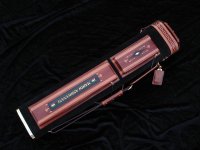
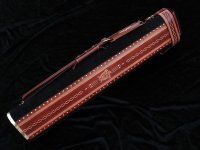
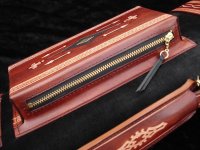
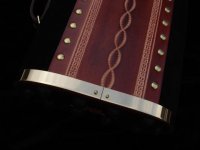

I think you are doing a great job offering a quality case for a reasonable price but mass or semi-mass produced cases will never compare in "fit and finish" or quality with cases made exclusively by the same craftsman from start to finish day after day. Unfortunately, I had to find this out the hard way just recently
Hi Jack,
is this why I don't see any Justis East-cases on the market?
Best regards,
Detlev
I think that there is merit to this. Jack Justis and I had a discussion years ago and his point is that the cues SHOULD have air flow around them. He lives in Florida where the ambient humidity stays high so I guess he has plenty of experience there. I did some online research and found that most people recommend not exposing wood products to a lot of changing conditions. However when a wood product is properly aged and treated then it can withstand quite a bit of environmental abuse.
I tend to think that it's something where the cue's construction is the primary factor in whether the cue develops issues and the case can possibly slow it down but if the wood is going to move then it's going to move eventually no matter what case it's in. Unless the case is hermetically sealed and kept at a constant temperature which is nearly impossible and impractical for cases designed to be transportable.
--The air moving around a cue is not important, it's the humidity that you need to be concerned with, and here's why.
Even if all of the materials in the cue have been prepared and cured properly, Humidity can still destroy a cue. Because cues are made with many different woods and ivory, plastics, metals, etc --all of these things expand and contract at different rates when they are exposed to extreme shifts in humidity. This is because each material has a different rate at which is absorbs moisture.
-Now a case cannot stop the changes in humidity, and you wouldn't want that- just imagine you open your case and POW an huge change in humidity level that the cue is exposed to all at once. The ideal case is one that has a good air tight seal so that it takes longer for the humidity to equalize so that the different materials have the time needed so that they don't expand or contract at vastly different rates.
- That detail in a case is what matters to a player that is trying to protect their cue, and that is what will make the cue last 20, 30+ years.
-Look forward to hearing your response, Any case makers.
I think that there is merit to this. Jack Justis and I had a discussion years ago and his point is that the cues SHOULD have air flow around them. He lives in Florida where the ambient humidity stays high so I guess he has plenty of experience there. I did some online research and found that most people recommend not exposing wood products to a lot of changing conditions. However when a wood product is properly aged and treated then it can withstand quite a bit of environmental abuse.
I tend to think that it's something where the cue's construction is the primary factor in whether the cue develops issues and the case can possibly slow it down but if the wood is going to move then it's going to move eventually no matter what case it's in. Unless the case is hermetically sealed and kept at a constant temperature which is nearly impossible and impractical for cases designed to be transportable.
--The air moving around a cue is not important, it's the humidity that you need to be concerned with, and here's why.
Even if all of the materials in the cue have been prepared and cured properly, Humidity can still destroy a cue. Because cues are made with many different woods and ivory, plastics, metals, etc --all of these things expand and contract at different rates when they are exposed to extreme shifts in humidity. This is because each material has a different rate at which is absorbs moisture.
-Now a case cannot stop the changes in humidity, and you wouldn't want that- just imagine you open your case and POW an huge change in humidity level that the cue is exposed to all at once. The ideal case is one that has a good air tight seal so that it takes longer for the humidity to equalize so that the different materials have the time needed so that they don't expand or contract at vastly different rates.
- That detail in a case is what matters to a player that is trying to protect their cue, and that is what will make the cue last 20, 30+ years.
-Look forward to hearing your response, Any case makers.
I always wondered though, if your case is airtight and you are in a very humid place when you close it, how much of that humidity is trapped in the case when you close it with no way out.
I always wondered though, if your case is airtight and you are in a very humid place when you close it, how much of that humidity is trapped in the case when you close it with no way out.
A very good point which should end the humidity discussion, but I doubt it will. Analists (a new word I just made up) might say they only open the case for two seconds so the humidity doesn't have much chance to get in, and at the first opportunity they drive to the desert to refill with dry air.
My cue is 27 years old and most of the time it is kept in the basement, which is more humid than the rest of the house. It's still as straight as the day I got it.
I think that there is merit to this. Jack Justis and I had a discussion years ago and his point is that the cues SHOULD have air flow around them. He lives in Florida where the ambient humidity stays high so I guess he has plenty of experience there. I did some online research and found that most people recommend not exposing wood products to a lot of changing conditions. However when a wood product is properly aged and treated then it can withstand quite a bit of environmental abuse.
I tend to think that it's something where the cue's construction is the primary factor in whether the cue develops issues and the case can possibly slow it down but if the wood is going to move then it's going to move eventually no matter what case it's in. Unless the case is hermetically sealed and kept at a constant temperature which is nearly impossible and impractical for cases designed to be transportable.
--The air moving around a cue is not important, it's the humidity that you need to be concerned with, and here's why.
Even if all of the materials in the cue have been prepared and cured properly, Humidity can still destroy a cue. Because cues are made with many different woods and ivory, plastics, metals, etc --all of these things expand and contract at different rates when they are exposed to extreme shifts in humidity. This is because each material has a different rate at which is absorbs moisture.
-Now a case cannot stop the changes in humidity, and you wouldn't want that- just imagine you open your case and POW an huge change in humidity level that the cue is exposed to all at once. The ideal case is one that has a good air tight seal so that it takes longer for the humidity to equalize so that the different materials have the time needed so that they don't expand or contract at vastly different rates.
- That detail in a case is what matters to a player that is trying to protect their cue, and that is what will make the cue last 20, 30+ years.
-Look forward to hearing your response, Any case makers.
I guess I have to confess that I really have no real idea what humidity does to cues in any way other than theoretical. Because to my knowledge no one has ever done any sort of comprehensive testing to find out how well a pool cue or better still how many different pool cues can withstand changes in humidity.
I once submerged one of my Instroke cases in the swimming pool in the back of our house to determine what it would take to get the water to go inside it. Dunking it rapidly and pulling it right out didn't do it. Dunking it for about 30 seconds allowed some water to get in and doing it for about a minutes allowed more water in. I didn't keep it under long enough (the water was cold) to let it fill up with water.
The cue came out fine. I dried it off and as I recall it didn't suffer at all.
I have read up on wood products and humidity.
Let me give a HUGE ROUND OF APPLAUSE to cue makers.
Because, as I have said many times, a cue is a precision instrument meant to be taken care of. Reading up on wood and humidity gives me even more appreciation for cue makers who build cues from wood. As you mentioned a cue is comprised of many wood parts joined by metal and plastic parts. It's clear that wood moves with humidity.
Cue makers therefore have to get the wood to the point that it's very stable when exposed to various levels of humidity. They have to account for a cue traveling from Las Vegas to South Florida and back just in the USA, not to mention all the places around the world that cues travel to.
This is an excert from this luthier's website, a luthier makes stringed instruments. http://www.ukuleles.com/Technology/humidmath.html
"In properly constructed furniture, the various parts of the piece are so constructed as to be able to move freely with changes in relative humidity. In contrast, the top of a musical instrument is constrained by being glued to the sides. The top of an instrument built at high relative humidity will be in tension at low relative humidity; conversely, the top of an instrument built at low humidity will be compressed at high relative humidity."
Here are two other webpages dedicated to wood and water: http://www.garyweeks.com/wood_moisture.htm http://www.woodfloorsonline.com/techtalk/woodwater1.html
And much more can be found online.
So it seems that the best case scenario is a case which keeps the cue at it's balanced moisture level.
--------------------------------------------------------
Let's do a hypothetical - again bearing in mind that I have ZERO actual data to add to this theoretical rambling and no idea how MUCH movement occurs and whether it's measurable, can be felt or not.
In our experiment the user lives in South Florida where the outside humidity is at around 80%. Indoors in the hyper-air conditioned buildings the humidity is at around 8%.
Ok. So in situation number one you have a cue that stays on the wall. The owner takes it out and using no case puts it in his car and drives one hour to the pool room. In that hour the cue was briefly subjected to 80% humidty twice for a few minutes and the rest of the time subjected to something between 80% and 8% in the air conditioned car. So during that hour it is absorbing moisture and swelling up.
BUT HOW MUCH and AT WHAT RATE?
Can it be felt? Is the cue actually heavier at the pool room than at the home? Does it get lighter if the humidity at the pool room is the same as home?
Now, in situation #2 the owner places the cue in a case that is forms a decent seal, say a 36" long Tupperware container. So the cue is sitting at 8% humidity. Now during the hour long drive to the pool room the cue stays at about 8% humidity because the case does not allow any more moisture in or out.
I think that we can surmise then that the cue stays in the same state that it was in at the house, not taking on any moisture.
I feel that this would be a fairly accurate representation of what would happen.
So I think that you are right. More moisture barriers are better. The best would be a fully sealed case that keeps the cue at the same moisture level as when it is indoors in the same humidity level as it was built under.
I think that this plays a big part when cues are stored in locations where the humidity changes. Using that Florida home as an example if the owner regularly opens all the windows and doors and turns off the air then the humidity level rises considerably inside. Thus a sealed case would ignore the ambient humidity and keep the cue safely at the same humidity level it was at when the cue was placed inside it.
BUT
Again we have no reliable data to tell us at what rate how finished pool cues on average respond to changes in humidity, be they gradual or sudden.
In other words we know that wood swells and gets heavier when it takes on water and gets lighter and shrinks when it sheds water.
BUT can this effect be felt with short exposures to different humidity levels?
I don't think so. But it may well be that this phenomena affects the "hit" of the cue, perhaps it is a little "heavier".
In any event I think that we can certainly all agree that the more a case slows down the exposure to varying degrees of moisture the better.
This case that started this rant actually seems to do a fairly decent job at forming a decent barrier to moisture. I give it a 5 out of 10 for that.
Infomerical: GTF Cases form a VERY GOOD seal against moisture. Not a 100% seal but certainly much better than most cases out there.
Here is an experiment we are doing with sealing the cases:
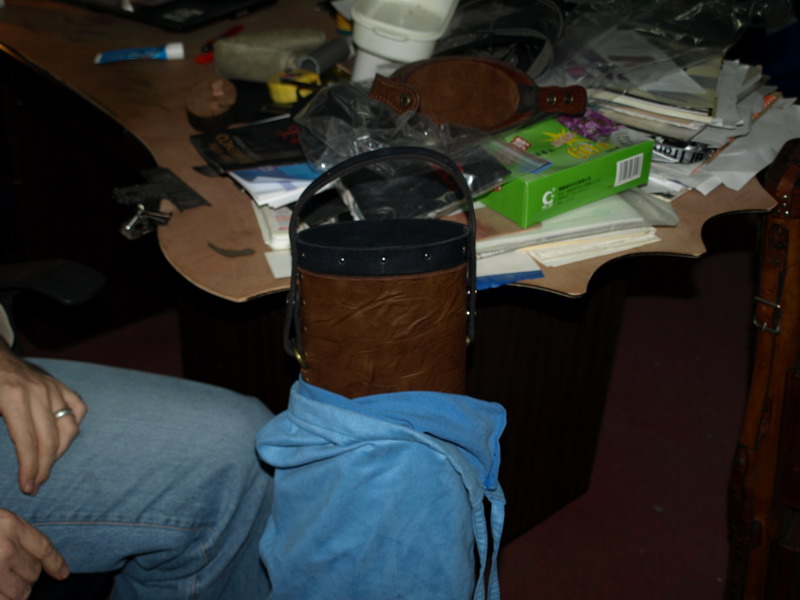
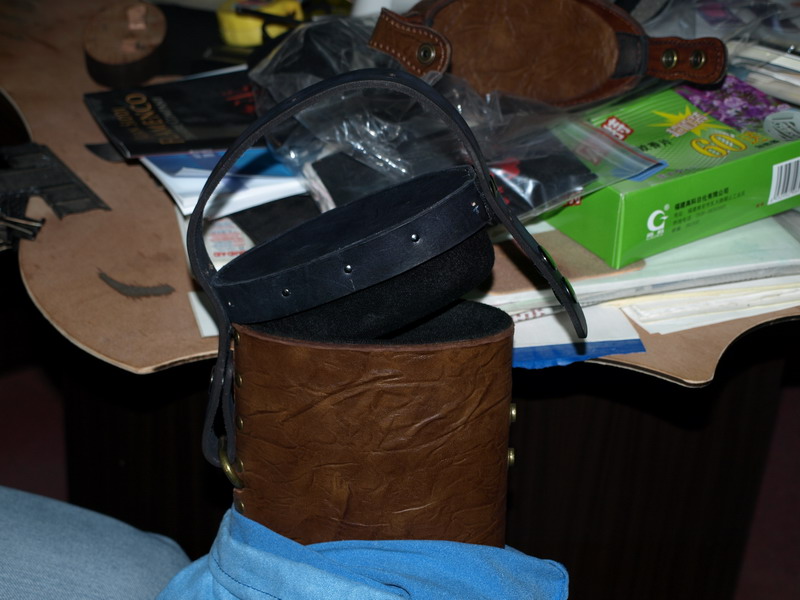

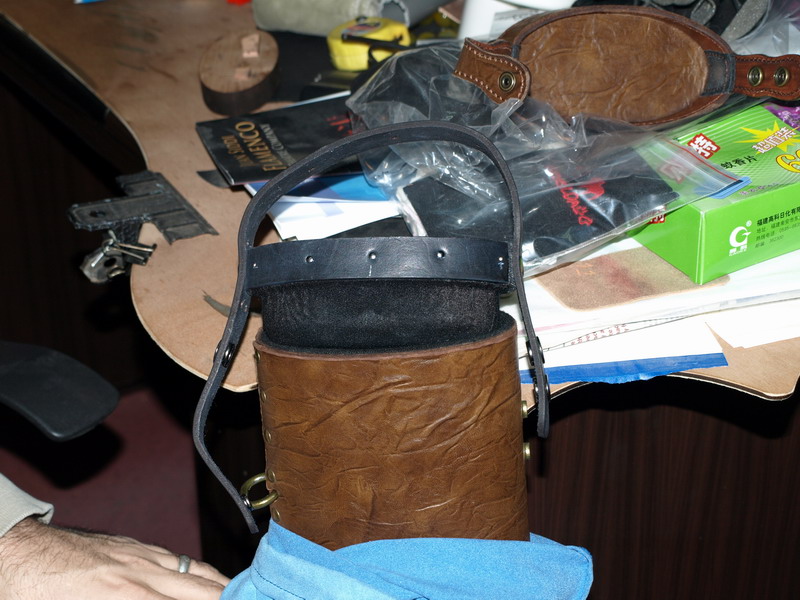
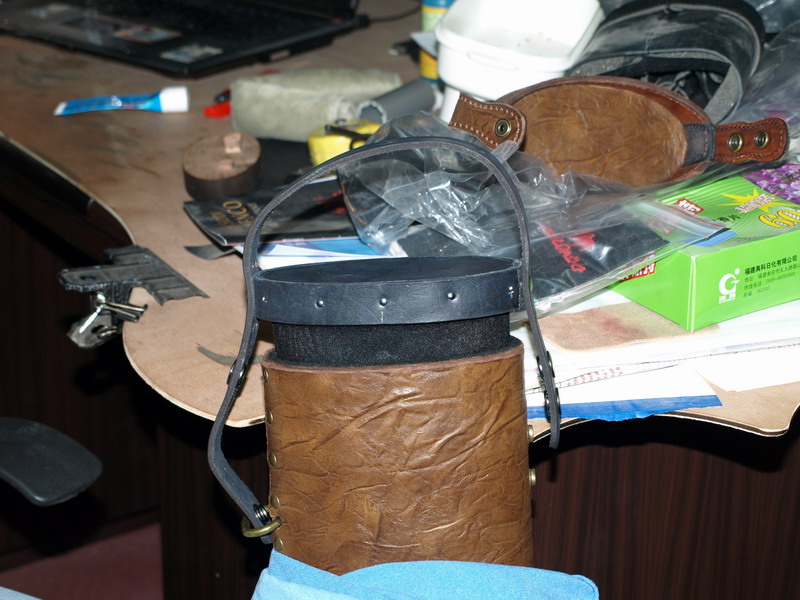
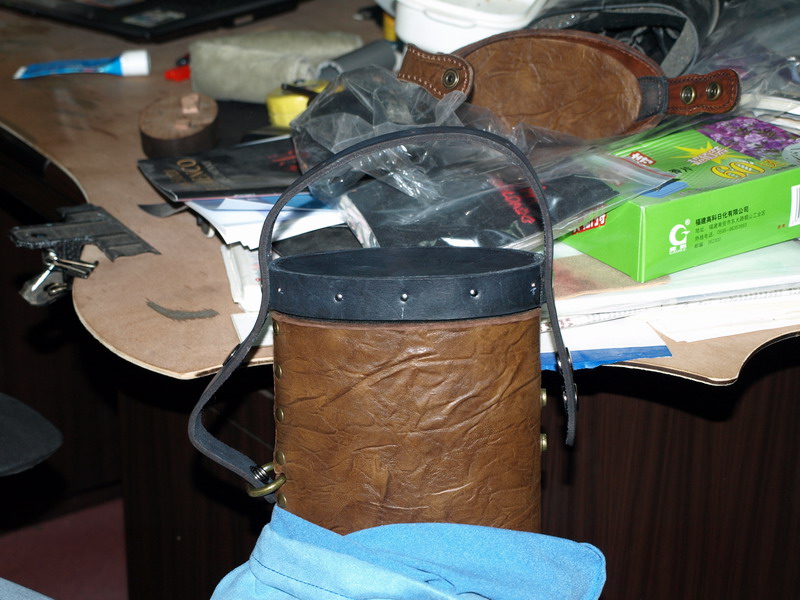
The idea here is similar to the cork in a bottle. We have used the laser to cut EVA foam precisely to fit inside the tube. The tube is lined with foam rubber backed fabric and when the lid presses in the denser EVA foam presses the fabric against the wall of the tube and forms a good seal. When it's opened it makes a satisfying -pop-.
Doing this would add length to the case as the plug takes up some room. I am sure that we can make it shorter and still have the same effect.
But I hope that this shows you that we are thinking about it and doing what we can to protect against moisture. I have thought about this a lot over the years and although I still believe that it's mostly up to the cue's construction how well it handles moisture I do agree that a case can help to protect the cue against the effects of moisture if it's built with that in mind.
I always wondered though, if your case is airtight and you are in a very humid place when you close it, how much of that humidity is trapped in the case when you close it with no way out.
That's a good point. I think if you are in a high humidity environment that a case should not lock everything in but should allow the moisture to evaporate and escape the case.
BUT - I suppose the inverse is also true. If you are putting your cue away in a low humidity environment then you probably don't want any more moisture getting in.
John,
Once I get out of "junk" price range I expect a well constructed item regardless of what it is. Quite honestly, I expect a case to protect my cues in normal use. If I toss it in the back seat and it bounces to the floor of the truck I don't expect any damage to contents although the case may show a mark or two. That is the price I pay for leather. If I toss the case with enough enthusiasm that it flies out the open door on the other side of the truck and into the four lane where it gets ran over by two eighteen wheelers and a garbage truck then I won't damn the case maker too loudly if I have a dent or scratch on a cue.
I want a durable case that is reasonably attractive and protects my cues in reasonable conditions. If I wanted a case that would protect my cue in all conditions I'd have it made at the local fabrication shop out of 3/8" steel.
However, you have a very good point about names and snob value. I can't count the times when people were talking about how wonderful an item was with obvious flaws because it was made by a major name. I couldn't help thinking, "take the name off of it and the same people would be calling this a POS!"
I have decided a long time ago that there is a niche for everyone. Find your niche and be happy. Don't worry about the niche somebody else fills.
Hu
[Here is an experiment we are doing with sealing the cases:
Very interesting. Almost a reverse of the GFT lid, the GTF has a friction fit lid over the outside of the tube. This lid has the "cork" type friction on the inside of the tube.
Seems like if used the large lid sized tube the GTF is used to build the body of the case, and then used the smaller size tube of a GTF body to build the cap, you add the farbric that causes the friction to the cap in the section where it slides into the case. Thus creating the seal with the same principle but with the lid fitting into the case tube instead of over the outside.
It looks like in that picture you almost did just reverse the tubes used for a GTF and did just this. Is that a tube normally used for the body section of the GTF that is used for the lid and the tube used for the normal GTF lid as the body of the case?
<edit> NM, I read the rest of the post, turns out you did not do this.
You might want to try this, attempt to build a case out of the lid sized tube, and build the lid out of a small section of the case sized tube. Put the fabric that creates the friction on the outside of the lid section so that it slips into the larger case tube, probably fold it over and into the inside of the lid section and secrure it with glue or the like, much like the felt type of stuff folds back into the GTF. They should fit perfectly, in fact the GTF is almost a model of this if you simply imagine a GTF case as a really big lid, and a GTF lid as a really small case. put the lid on the ground opening facing up and the huge "lid" slides right into the small "case".
If the cap is in fact built out of a small diameter tube that fits inside of the case tude you simply have to add a cap to one end. Build up the outside area of an upper portion of the cap that becomes a rim that butts up flush against the case when the cap is fully inserted. And for the inside section of the tube that makes up the cap cut a section of memory foam just smaller then the inside section of the cap, cover one end and the sides with soft fabric like that which is used on the interior of the cases, and then slide it into the lid with glue to secure it to the cap at the top of the lid. Now the lid has a soft rebound center in the lid that mitigates shocks if the case is dropped, the pins would hit a soft memory foam area if the case was dropped on it's lid, although your interior itself would help make sure that the pins would hit with minimal force to begin with.
Done right this could be an amazing combination of the true air tight qualities of the GTF and the larger look and feel of the other types of cases.